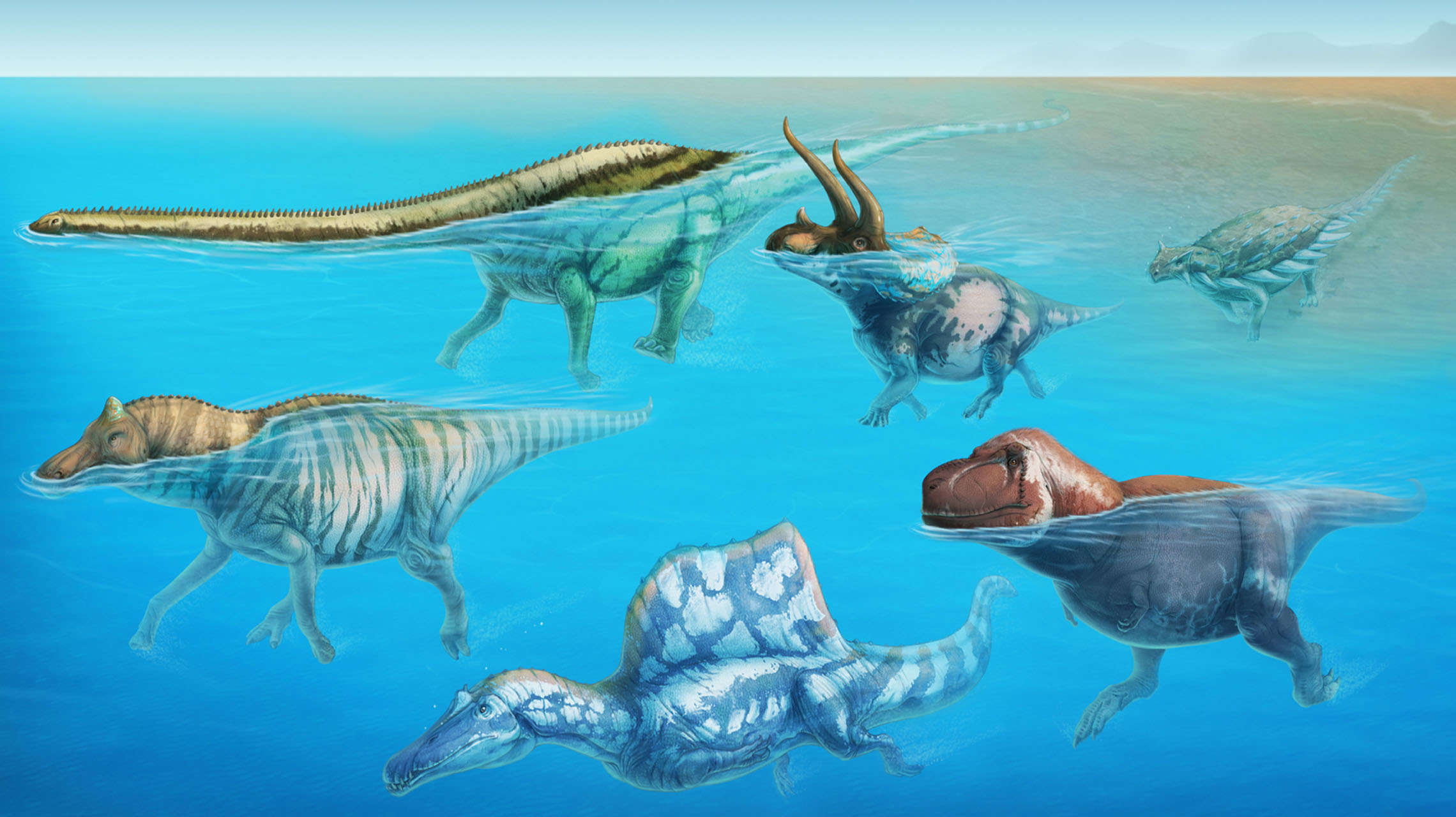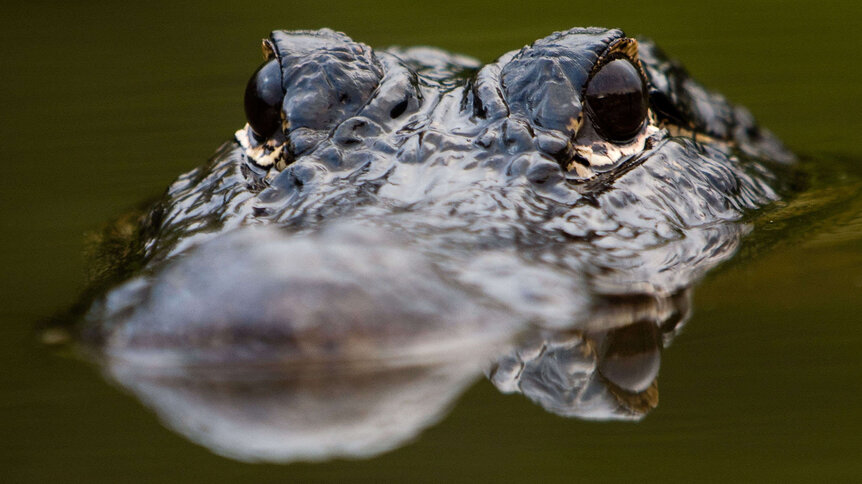Create a free profile to get unlimited access to exclusive videos, sweepstakes, and more!
Would humongous dinosaurs sink or swim? The answer might surprise you

With the exception of reptilian sea monsters that terrorized prehistoric waters, the thought of dinosaurs as huge as T. Rex or Diplodocus being able to swim seems ridiculous. Almost.
Whether something would be able to swim on the surface or sink is actually determined by that organism’s body density rather than its size. Dinosaurs may have been able to reach gargantuan proportions, but new research has found that their bodies were about as dense as most terrestrial creatures (that includes us). This is actually a higher density than was previously assumed, but it means that most sauropods and theropods that usually hung out on land would have been able to keep their heads above water.
“Having an accurate idea of dinosaur densities can tell us the distribution of various species,” Asier Larramendi, who led a study recently published in The Anatomical Record, told SYFY WIRE. “We can find out more about their swimming capacities, and why some were less successful than others at spreading through new territories that were separated by water masses.”
For some dinosaurs, the closest they ever got to taking a swim was stopping for a drink at the nearest watering hole. Beyond that, body density can tell us which species would have been able to cross through water as they migrated — and make it back to land in case of flooding. This can help scientists make sense of the fossils in bonebeds left behind by dinosaur victims of floods and mudslides. There was one such jumble of bones that made a strong case for tyrannosaurs that perished together having also hunted as a pack. Tyrannosaurs were previously assumed to have been lone stalkers.
T. Rex was a species of tyrannosaur, and just like almost everything from bats to humans, its body density would have allowed it to swim...if it weren’t for those freakishly short arms. Any creature needs to have a body density no more than that of water. The density of water is 1.0. The poster child for prehistoric carnivores comes in at about .95. Heavily armored dinosaurs like Triceratops or Ankylosaurus would have drowned in a flood, which explains why so many of them have been found in bonebeds. What might be surprising is that while humans are nowhere near dino-sized, we are slightly denser than most sauropods.
“Human density is barely higher than that of theropods like Allosaurus or Velociraptor, but we are even denser than most the sauropods, because, in this group, the system of air-sacs was more developed, especially those of their long necks,” Larramendi said.
Many sauropods evolved long necks that helped them get to leaves in treetops that were out of reach for many smaller herbivores. Though pneumatic, or hollow, bones are often associated with avian dinosaurs, they also allowed dinosaurs like Diplodocus to develop huge necks, because having pneumatized bones kept those necks surprisingly lightweight. Both sauropods and theropods developed air sacs otherwise known as diverticula. These would take up space in most of the bone cavity, replacing connective trabeculae, and relieve the dinosaurs of an otherwise heavy burden.
Not much was known about whether dinosaurs would sink or swim until now. Hypothetical densities for some dinosaurs had even been too low, because they were figured out by factoring in lungs at full capacity. Larramendi had actually been working on a different study when he and his colleagues realized that they needed to somehow estimate the densities and body weights of many extinct species, including dinosaurs, which is what led to this entirely separate study that he just published.
“Pneumatic diverticula in dinosaurs' bones occupy only those areas where no support is needed, and this lightens the bones and reduces the weight of the skeleton,” he said. “Relatively lighter skeletons, among other factors, allowed certain dinosaurs, especially sauropods, to increase their body size and to develop extremely long necks.”
Does that mean a Diplodocus would be able to outswim Michael Phelps? Probably not, but it would be a blast at a pool party.















